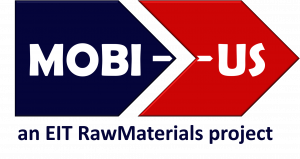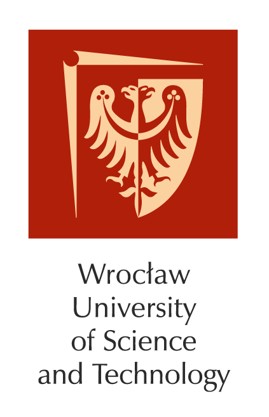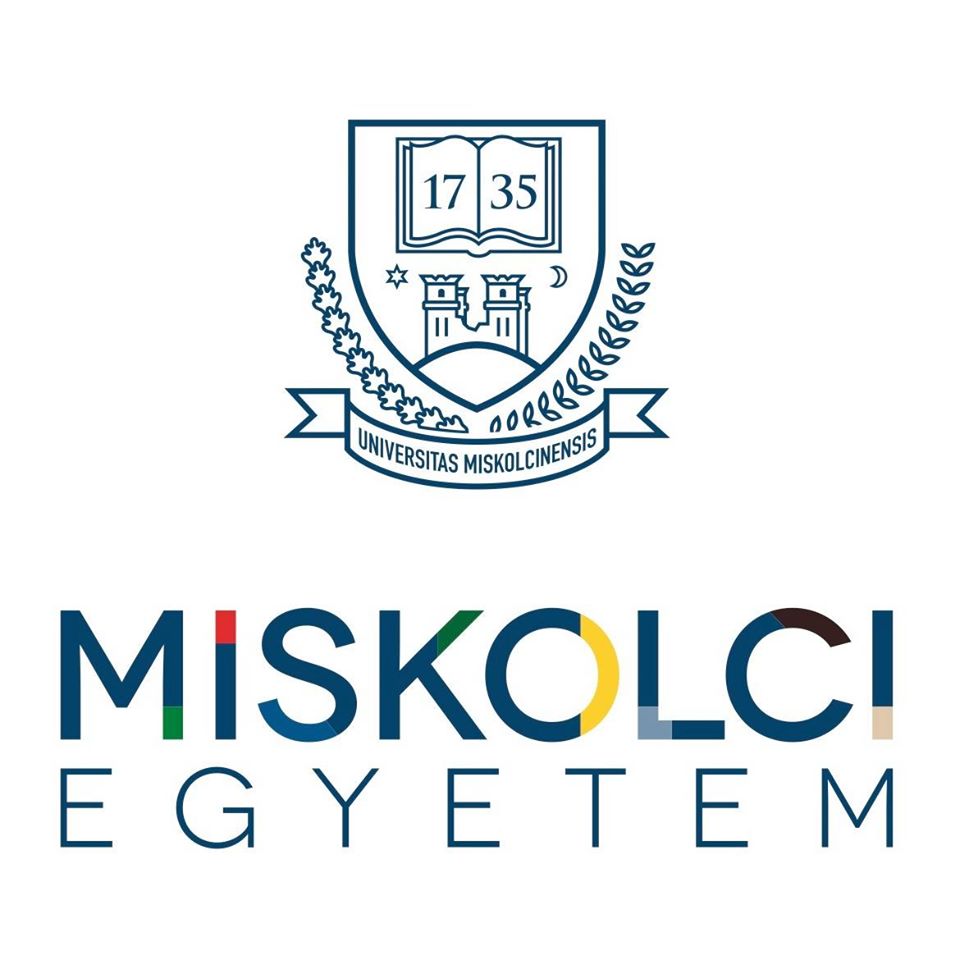
Pathway 5


ENVIRONMENTAL AND GEOTECHNICAL ENGINEERING
This pathway offers for students of WUST on the Mining and Geology MSc, Specialisation of Geotechnical and Environmental engineering to spend the second semester in Miskolc, completing courses from the Environmental Engineering MSc. For the WUST the driver in Pathway 5 is that using this it can offer the Geotechnical and Environmental Engineering specialization for the Mining and Geology MSc programme. The mobility window for students from WUST offers courses from the first and third semesters of the Environmental engineering MSc of UM, which helps the transferability of the credits.
CONTACT
Prof. Tamás Madarász:

1st - summer [ECTS]
Theory and practice in geomechanics [6]
Computer Aided Geological Modelling and Geostatistics [5]
Project management, appraisal and Risk Evaluation [4]
Engineering Geophysics [3]
Integrated analysis of deformations in geomechanical engineering [5]
Occupational health and safety [2]
Excavation design in open pit mining [5]
[30]

2nd - winter [ECTS]
Foreign language [3]
[30]

3rd - summer [ECTS]
Mineral processing systems [3]
Excavation design in open pit mining [3]
Digital mine [2]
Free elective [3]
Diploma seminar [2]
Foreign language [2]
Master thesis [15]
[30]

Course descriptions of the mobility semester
- Aim: Students awareness of the environmental assessment procedures, the methods can be used to make the study.
The course goes through the steps of the completion of an EIA, thus gives applied knowledge and skills to manage and complete the task for an EIA. The course gives valuable knowledge and skills especially to the Remediation and Environmental Geotechnics specialisation.
The students shall complete individual tasks in a relevant topic. The completion of the assignment develops applied skills of the student as well as the autonomy and responsibility. - The short curriculum of the subject: The history of environmental impact assessment. The legal regulation of the environmental impact assessment. Environmental assessment, environmental impact assessment, uniform environmental permit. The qualification of environmental test activities can be combined with the functionality and connectivity of the procedures. The phases of environmental testing, the method of the official method. The preliminary environmental study. The detailed requirements for environmental compatibility studies. Acting factors stakeholders, impact processes, the spread effects. The effect areas, control areas. The main aspects of recruitment procedures and environmental standards. In the effectiveness test methods and procedures. Impact Assessment. Monitoring. The impact assessment public of the hearing, public hearing. Analysis of practical examples. Preparation of an impact test, study management, presentation, public discussions.
Practical work: self-made solutions of simple case-study problems.
- Description:
The course gives on one hand the fundamentals of air quality protection, on the other hand the most relevant applied knowledges about air quality control during different industrial acticities which emit large quantities of air pollutants. The course provides important background especially to the Waste management specialization. On the other hand, this is an essential topic of any environmental engineering programme.
Lectures are complemented by discussion of case studies. Students should complete individually a report on a case study during the semester, which develops their practical skills, autonomy and critical thinking.
1.) Flow diagram of waste processing; basic regulations for thermal treatment and disposal.
2.) Combustion parameters of wastes: physical state (solid, liquid, gaseous), particle composition, density, moisture and ash content; chemical composition (C, H. N, S, Cl), calorific value.
3.) Calculation of combustion parameters: the chemical reactions of combustion, minimum oxigen and air requirement of fules, optimal air excess necessary for complete combustion.
4.) Gaseous wastes, normal burning velocity of fuels, flame velocity, flammability and explosion limits, operating conditions for safe combustion; methods for flame stabilization.
5.) Flame and flue gas characteristics: specific volume, chemical composition, specific heat capacity; combustion temperature (theoretical and actual), dissociation and adiabatic flame temperature (definition, calculation methods); methods for increasing/reducing combustion temperature.
6.) Technical parameters of waste incineration, auto-ignition range; grid types and grid structures, combustion chamber geometry, the construction of refractory walls (design and structure).
7.) Hazardous waste disposal (by incineration), required minimum incineration temperature, the thermal treatment of halogenated waste, present-day waste incinerators, determination of post-combustion chamber (’afterburners’).
8.) Characterization of solid combustion residues: physical-chemical properties, mineral composition, thermal behaviour, sintering and ash fusion characteristics, melting temperature. Treatment and disposal of slags and fly ash.
9.) Burners: classification, geometry, sizing, fuel injection by spray nozzles (oil burners).
10.) Air pollution control: regulatory measures and provisions for waste incineration; possible allowed emission and immission concentrations (EU target values).
11.) Gaseous pollutants: CO, radicals, sulphur oxides, NOx formation (conditions, intensity), primary reduction methods, determination of gas emission concentrations.
12.) Characterization of gaseous pollutants; options for secondary emission reduction; flue gas cleaning methods and equipment.
13.) Definition of dust (for environmental regulations), properties of particulate matter (PM), separation and collection mechanisms, design and operation of dust collection systems (separators).
Practical work: self-made solutions of simple case-study problems.
- Acquired store of learning:
The students will be familiar with the basic elements and concepts of modern water and waste water purification technology and processes. The students will be able to choose the right purification technology concerning environmental protection aspects.
Since water is the most sensitive medium in the near-surface environment, the course has a key importance for both specialisations, but especially for the Waste management specialisation. This course provides applied knowledge where the students get familiar with the most important technologies and practices of water and wastewater treatment.
Theoretical part is complemented by demonstrations of different water and wastewater treatment technologies, as well as with a field trip to a wastewater treatment plant. - The short curriculum of the subject:
Contamination and pollution processes in water. Pollution limits in water and in groundwater. The most typical contaminants and their physical and chemical properties. Sampling, and preparations of samples. Cleaning and purification technology for municipal and industrial waste water. Technology design.
- Acquired store of learning: The students will be familiar with the basic concepts of environmental geotechnics.
This is an applied course that introduces the most important geotechnical issues and tasks that appear during the design and operation of a landfill site. This is is an important applied course in the Remediation and Environmental Geotechnics specialisation.
Theoretical part is complemented by demonstrations and calculations. - The short curriculum of the subject:
Physiochemistry of soils for geoenvironmental engineering. Changing of soil parameters caused by contaminants. Determination of contaminant retention capacity of soils. Barrier systems, geological and geosynthetic barrier systems, horizontal and vertical barriers. Geotechnical aspects of landfilling. Stability and deformation of waste dumps, liner systems. Geotechnical tasks of recultivation. Investigation of contaminated sites. Geotechnical problems of remediation. Waste as constructions material. Soil improvement.
- Study goals: To introduce the chemical techniques on environmental pollution treatment, waste recycling and treatment, as well as on pollution control.
The course gives the fundamentals of chemcial processes applied for waste management therefore it is one of the background courses for the Waste management specialisation. It develops the knowledge and skills obtained from the Analytical chemistry course.
Theoretical part is complemented by laboratory practical work of the students. - Course content: Theory of mass transfer, laws, relationships, diffusion equations. Principles and fundamentals of design of chemical techniques and reactors. Solid-liquid extraction as a technique for the treatment of solid wastes, methods and equipment. Treatment of contaminated fluids: adsorption, precipitation (cementation), ion exchange, liquid-liquid separation. Thermal techniques like rectification, thermal oxidation, pyrolisys and gasification.
- Acquired store of learning:
The students will be familiarized with the basic concept and framework of Environmental and Human Health Risk assessment and its relationship to contaminated land remediation. The students shall be competent in reading and understanding risk assessment documentation and evaluating its correctness. They will be able to work together with other field specialists in a risk assessor team. They will get a brief introduction to remediation practices and their design and the European practice of remediation planning and monitoring.
This is one of the applied courses of key importance on the Remediation and Environmental Geotechnics spacialisation which provides knowledge and practical tools to understand concept of environmental risk assessment and to complete risk assessment tasks for the shallow subsurface environment.
Theoretical part is complemented by individual report preparation by students on different case studies. It develops the practical skills of the students as well as their responsibility and critical thinking. - The short curriculum of the subject:
History of Risk Assessment, principles and background of RA methodology, Overview of risk related terminology and definitions, Elements of HHRA methodology, Problem formulation, Exposure assessment, Toxicity assessment, Risk Characterization, Risk assessment and its role in site remediation, Risk interpretation, EU legislation and practice of RA methods, Hungarian legal background, various applications of RA methods, risk based target value and its determination, Case studies.
Practical work: self-made solutions of simple case-study problems.
- Course Description:
Students will be familiar with the structure and physical and chemical properties of soils and water or aquatic media. The course will highlight the main intersection that exist between the phases of soils and the transformation of inorganic and organic materials in soils, the equilibriums exist in the aquatic phase.
Definition and physica and chemical classification of soils. Inorganic and organic constituents of soils. Structure of soils: aggregates and pores. Composition of phases of soils. Chemical equilibrium that exists between the soil phases: sorption and ion exchange, dissolution of soils and gases, acidbase and redox interactions. Soil contaminats and soil protection.
Physical and chemical properties of water. The state diagram of water. Properties of ice, liquid water and the vapor. Supercritical state of water. Behaviour of water as a solvent. Dissolution process of gases, liquids and solids in water. Behaviour of water as a chemical partner. Acid base equilibria, hydrolysis, complex formation and redox reactions. Isotopic, and chemical compositions of different waters. The main possibilities for modifying the water composition.
The course gives the fundamental chemical knowledges of two mediums – water (surface watercourses and groundwater) and soil – which are in the main focus of investigation and remediation for the environmental engineers completing their studies in this master programme. Theoretical knowledge of this course is applied by several consecutive courses, especially on the
Remediation and Environmental Geotechnics specialisation.
Calculations and experiments complement the theoretical part of the course, that help the better understanding of the content.
- Acquired store of learning:
Study goals: Upon completing the course, students shall understand the relation between engineering and mathematics; comprehend important concept of solution methods using both analytical and numerical techniques when the problems can be formulated using differential equations, system of linear equations and system of nonlinear equations. In addition, students
shall be able to apply the optimization techniques to various engineering problems.
The course gives the theory background for calculations applying numerical methods which are essential to solve different statistical and geophysical tasks.
The course focuses on theory, which is supplemented by the course Computer sciences for engineers, providing the practical applications and exercises. - Course content:
Extrema of functions. Unconstrained and constrained optimization. Convex optimization, Minimization of functions with one variable (golden section, parabola method). Minimization of multivariable functions (Nelder-Mead, Newton, modified Newton, quasi-Newton, minimization with line search). Methods of penalty functions. Multiaided and multicriteria decision problems (Pareto effitient solutions). Linear programming. About Soft Computing (SC) methods: fuzzy systems, genetic algorithms, neural network.
Numerical solutions of ordinary diffrential equations and system of equations: Runge-Kutta, predictor-corrector, finite differences.
- Course description: The objective of the course is to prepare students to perform professional tasks on a higher level by applying the approach of quality management, including managing or participating related projects. The student will learn about principles, concept and terminology of quality management, quality-related corporate activities, requirements of the ISO 9001 standard and the specialities of project quality management.
The course develops the theoretical background on quality assurrance and quality management issues, which contributes to human and economic skills of the students.
This is primarily a theoretical course, but students complete and submit exercises as well.
1. week: Terminology of quality management (principles, 5 approaches, 9 influencing factors), history of quality management.
2. week: Quality management standardization. ISO 9000 family. Concept of quality management by ISO 9001.
3. week: Process approach in quality management. Kaizen.
4. week: ISO 9001 requirement: Management system.
5. week: ISO 9001 requirement: Product and production.
6. week: Auditing quality management system. ISO 19011:2011 standard.
7. week: Total Quality Management. Lean approach in quality management.
8. week: Enhancing quality management, integrated management systems.
9. week: Quality tools: 7 old&new tools, finding the root cause, 8D.
10. week: Quality tools: FMEA, QFD.
11. week: Business excellence. Quality Awards. Tools and methods of self-evaluation.
12. week: Project quality management: planning.
13. week: Project quality management: risk analysis.
14. week: Project quality management: monitoring and performance evaluation.
- Course Description: The main objective of the course is to make the students familiar with the effects of geological medium on the state and changes of the environment, and prepare them for revealing the geological background of environmental problems as well as mitigating or minimizing these problems.
The course gives an overview about interaction of different elements of a near-surface geological environment. Using case studies, the students gain practical skills also to discover the interrelationsip between these different elements.
Individual project tasks on environmental geology cases should be completed by the students using GIS softwares. - The short curriculum of the subject:
System approach in geology, changes in the four main systems of the Earth. The objects, methods and legal background of environmental geology. Environmental minerals, their characteristics and role in causing and mitigating of environmental problems. Geological hazards (volcanism, earthquakes, mass movements). The role of geological medium in the anthropogenic
contamination and pollution (processes of environmental geochemistry, interactions between soil, rocks and contamination, geological conditions effecting on the spreading of contamination). Geological and geochemical concerns of the effects of mining on the environment. Geological background of the radioactive waste disposal. Geology in nature protection. Geological tasks in the environmental assessment.
Practical work: self-made solutions of simple case-study problems.

